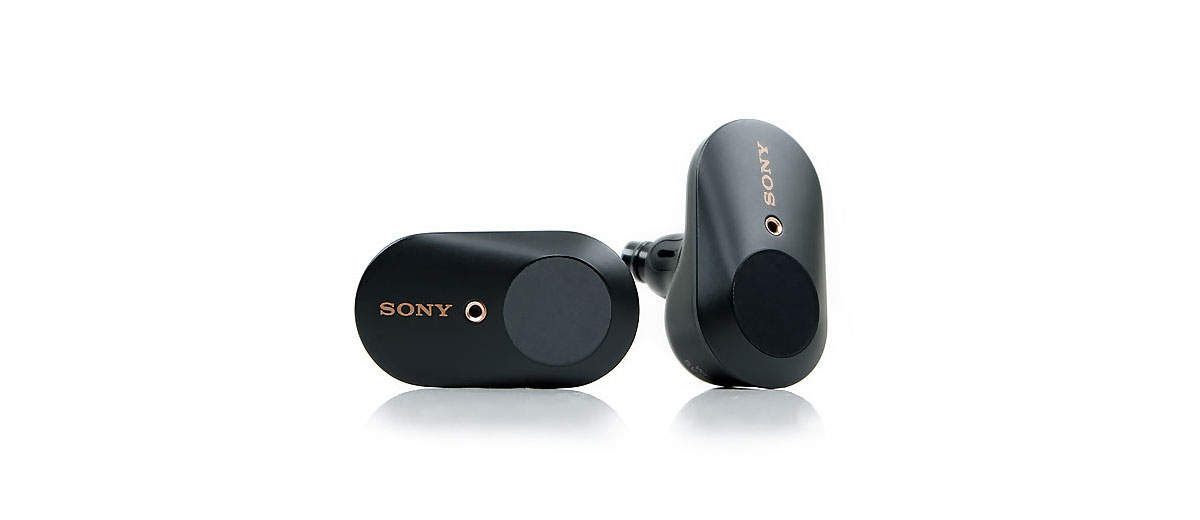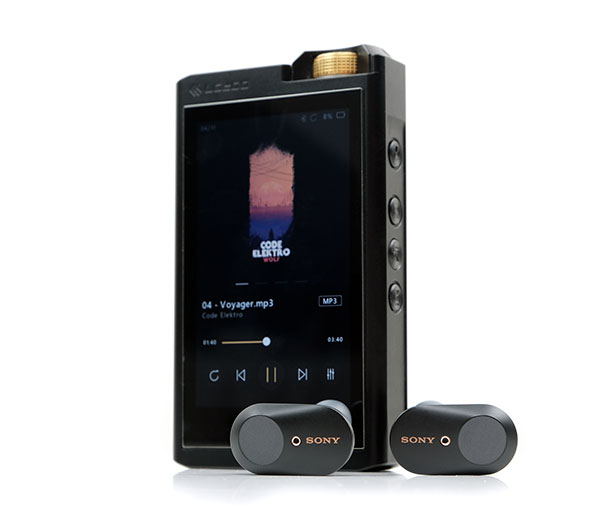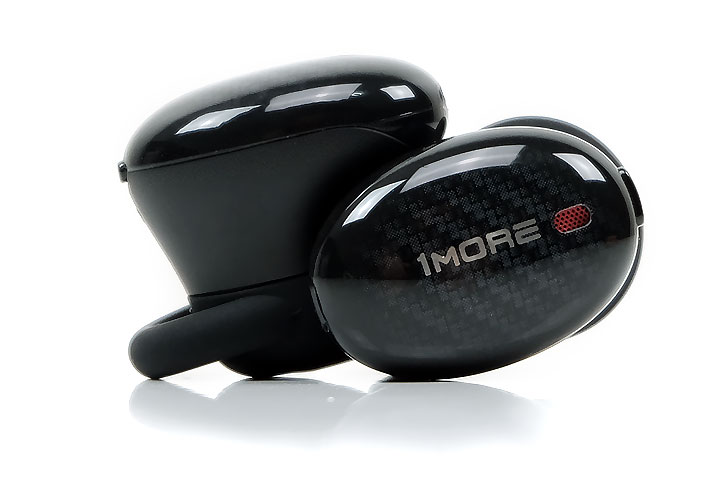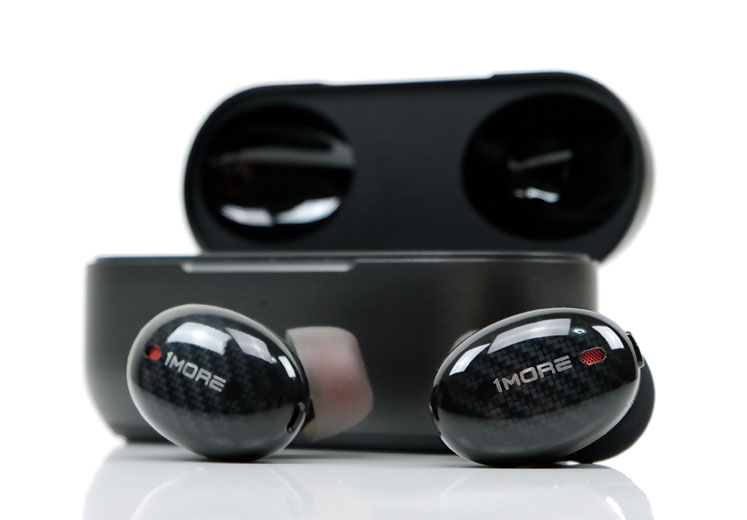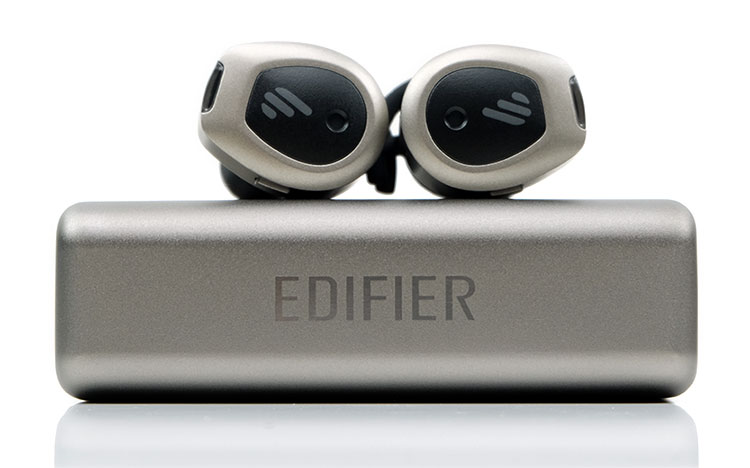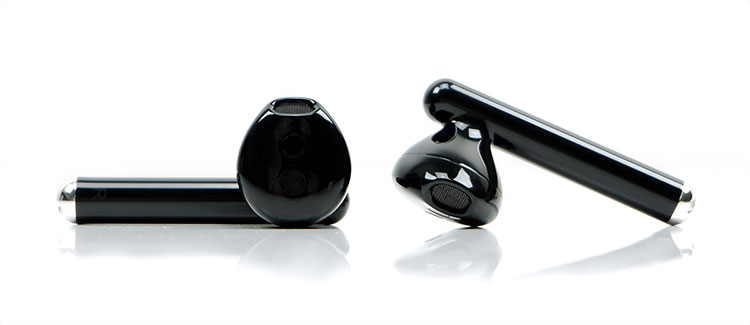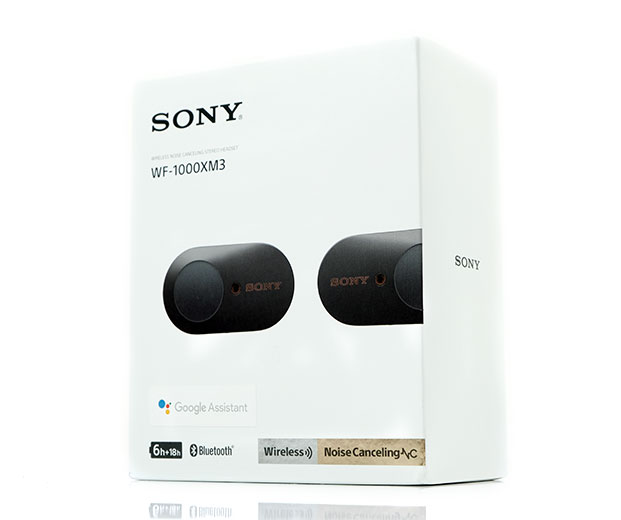WF-1000XM3 Performance Impressions
Summary
What I really like about the WF-1000XM3 presentation is that it does not pander to the casual listener in quite the same exaggerated fashion as some of the competing models. Also, the ANC does not overly color the sound signature or throw a veil on the detail either.
This tuning here has all the hallmarks of an above-average IEM dynamic driver performance with moderate bass bloom, excellent midrange clarity, and a treble that can get peppy but nowhere near as grating as I was expecting it to be from looking at some measurements out there.
Bass
Sub-bass is nowhere near as dominant as the 1MORE True Wireless ANC but it does extend very well indeed. There is also a little bit of lower-mids dipping from a mid-bass elevation but it does a soothing level of warmth into instrumental timbre. The tone is more natural to my ear and not a thick, rich, or overly rounded coloration. It is perhaps the most audiophile I have heard a TWS get in that regard.
Mids
The WF-1000XM3 does have a subtle 1-3k rise that teases out some very good vocal clarity and not just female but male also. Comparing to the Edifier TWS NB or the 1MORE options, the vocals have plenty of room to breathe without sounding shouty.
The mids are not quite as open as the Freebuds 3 but those are purely midrange performers whereas the WF-1000XM3 has some solid depth and height to go along with that fairly open midrange.
Treble
Perhaps the one bone of content is the treble. Now initially, I did feel it to be on the piercing side with a fairly sizeable amplitude increase around 7-8k and for some of my peppy rock anthems with heavy percussion work it can bear down and wear you out.
However, because the mids, in general, are not overly pushed the treble sizzle doesn’t seep too far down into lower-pitching instrumental harmonic orders.
What that means is the sizzle is fairly narrow to the upper mids and treble rather than create harsh tone right down to male voicing. You will understand what I mean when you read the Edifier TWS NB comparison. This also means the in-built app EQ is quite successful in controlling that sizzle without upsetting the rest of the presentations balance
Staging
For a TWS the WF-1000XM3 staging is above average. Not simply because of the excellent extension on either end but also that amplifier inside the Sony’s which paints a very black background. That really helps enhance the perception of detail from that small 6mm driver.
Throw in some ANC that doesn’t weigh down the timbre or throw in a veil and its probably the best in the business today or at least to what I have tested to date on a closed TWS.
Regular audio, and by that I mean whatever is loaded on your phone or source sounds pleasingly accurate with above-average imaging. 306 Reality Audio pushes it even further with a far more complex soundstage throw all manner of spatial cues from every direction you can think of.
These work wonderfully well for a 360 Reality Audio live performance of which there are plenty on Deezer in hi-res also. The fact I can pick that up on the WF-1000XM3 is testimony to how well they can perform when pushed.
Do I think the treble is a little pushed to enhance the perception of clarity in those tiny cues? Most likely, and if you EQ is all down you might lose a little of that also.
Ultimately it depends on what you are listening to. I think for orchestral and classical go for stock or even DSEE HX which introduces even more contrast. However, for relaxed or casual pop and rock listening, I would maybe bring the treble down by 2-3dB on the EQ.
Wireless Performance
Pairing
Like most modern TWS systems the WF-1000XM3 pairing process is very straight forward though I did find a few labeling quirks depending on the source.
Because each driver connects independently it is possible you will see a channel-specific label. On my own Note 9, this came up as ‘LE_WF_1000XM3’. However, on a Windows 10 BT platform, there was no channel distinction with the label ‘WF-1000XM3’ showing instead.
Aside from that, the WF-1000XM3’s turn on as soon as you take them out of the cradle and match almost instantly if you have an existing pairing source turned on. They will cycle through various stages first including the power on and any ANC status also via the internal voice messaging system.
If your battery runs low it will also alert you when in use so you can place them back in the cradle. Once back in the cradle any active pairing is disconnected and the drivers are powered down.
Stability & Range
I had a few issues with the stability of the WF-1000XM3 when in the field so to speak. I believe this is related to whether you optimize for sound performance over stability. When traveling through airports the optimized for sound quality had a lot of stutters and dropouts whereas when at home I had none of those issues. On both occasions, I used the same Note 9 source.
From this, my logical presumption was the level of EMI from ‘competing’ BT sources and receivers in the immediate area of the airport was huge whereas at home I had maybe 2-3 at the most. Moving to optimized for stability corrected the error but never my ideal setup for audio quality.
The actual stable range when optimized worked as advertised at 10m but there are cheaper solutions that will go a lot further including the Edifier TWS NB and Helm’s TW5.0, perhaps up to 5m further.
Platforms
One important thing to note is DAP performance is sketchy but that is more the issue of weak BT modules in DAPs than anything wrong with the Sony’s. Lotoo’s implementation is something to watch out for as they tend to drop and repair like crazy with most TWS and the WF-1000XM3 suffer from that also.
FiiO’s M15 and Sony’s own 1Z DAP fare much better but its really smartphones that come no 1 for distance paired with the WF-1000XM3. Work to do there for DAP manufacturers for the future.
Latency
I actually thought the WF-1000XM3 was one of the better TWS performers for latency for general media or video/YouTube files on Windows 10 and Chrome. I have tested 100’s of x264 files over the last 6 months with various audio sample rates and never really felt the need to hugely tweak the Sony’s for lag. The same also for Android smartphones.
Is it as tight as the Senn’s given they use an LL codec? I would say looser because a few files I would have to tweak to around 0.1s or even 0.2s hasten on VLC.
Some of that can often be down to the encoding of the individual files as well as the TWSD performance. However, it has never been consistently as laggy as the competing TWS units and some of those are aptX capable such as the 1MORE True Wireless ANC.
Select Comparisons
1MORE True Wireless ANC
$199.99
Technical
We reviewed the 1MORE True Wireless ANC a few weeks ago and thought it was well put together with plenty of interesting features. The price point does place it very close to the Sony WF-1000XM3 at $199 so from time to time during sales periods you might find both at the same price point.
The WF-1000XM3 is missing a few things that the 1MORE has up its sleeve such as aptX, a larger 10mm dynamic driver, and an additional balanced armature driver. The Sony still only decodes AAC and SBC and a distinct disadvantage if not for the excellent but smaller single 6mm dynamic driver inside as well as their excellent app EQ and 360 Reality Audio features.
Battery life on both is fairly similar with Sony slightly edging it at 6 hours with ANC on for the drivers and 1MORE at 5 hours. The cases times are reversed slightly with 18 hours on the Sony and 22 hours on the 1MORE.
Neither are IPX rated but I do feel the Sony design might be the more susceptible to water damage than the 1MORE. Just a hunch, not willing to put it to the test.
Design
In terms of finishing it is 6 of one half a dozen of the other. Both look good and it may come down to just personal preference. I do like the sheen of the carbon fiber finish of the 1MORE. I feel they do have a bit more style and less width. However, the Sony WF-1000XM3 executive styling will appeal to many as well as a more elegant touch control system.
The 1MORE is more secure in the ear, particularly if you are actively moving. The two TWS take a reasonably similar form factor approach with the angular stout nozzles. However, without the 1MORE’s steadying O-ring system the WF-1000XM3 feels more prone to falling out and their gradual movement can sometimes require adjustment.
The cradle of the 1MORE True Wireless is smaller, stronger, higher quality of aluminum materials but not as stylish as the WF-1000XM3. Both have USB-Charging but the additional Qi-wireless feature and quick charge on the 1MORE gives it an advantage for rapid charging.
ANC
The 1MORE is better on low-frequency sub 300Hz but lets in a bit more high-frequency noise beyond 1k. As a result, the WF-1000XM3 ANC might be the more ‘soothing’ of the two with its more even attenuation across the range. I would make a case for the 1MORE aggressive low-end dB attenuation being pretty good with jet engines, however, and the WF-1000XM3 perfect for window aircon systems.
Both have decent ANC app control with the 1MORE offering two levels direct from its GUI dashboard. The WF-1000XM3 ANC, however, is much more complex in its leveling with 4 usage scenario settings and a slider that has over 20 fine-tune adjustments. It also has an excellent Sense Engine to automatically control it based on what you are doing.
Performance
Pairing for both follows a very similar pattern both with the app and traditional pairing so you would be hard-pressed to find a difference. However, in terms of stability and range, I found the 1MORE to have the advantage.
The WF-1000XM3 can be set up for improved stability via the app which I appreciate but you do get a small drop in sound quality as a result. That being said, it still has a tiny amount of stutter at a 10m range now and then. Beyond that with a second wall behind it drops out faster than the 1MORE performance.
The latency performance on the WF-1000XM3’s are impressive and the equal of the Sennheiser MOMENTUM TWS. Using the same 2 media files with an audio bitrate of 640kbps and 162kbps we did not require the Sony’s to be tweaked for tight sync of video and audio. The 1MORE did require o.2s of ‘hasten’ on VLC to keep it as tight.
Tuning
Though both TWS systems have a decidedly dynamic driver bass timbre with the 1MORE low-end significantly more forward and elevated than the WF-1000XM3. The Sony low-end has a bit of a mid-bass hump and a good sub-bass extension but it sounds more controlled compared to the power and punch of the True Wireless ANC.
Mids on the WF-1000XM3 has an element of elevation from 1-2k but otherwise sounds more neutral than the forward sounding vocal presence of the 1MORE. Timbre on the 1MORE is warmer also with a thicker vocal and softer instrumental notes, for example, piano.
Not that the WF-1000XM3 is cold sounding but rather it is not as rich or powerful sounding. As a consequence, the instrumental weight is a bit more accurate and ‘audiophile’ for me on the Sony and the entire soundstage sounds a bit more open as a consequence.
Instrumental separation benefits from the lack of heavy bass emphasis and your ears are not as drawn to key instrumental lines such as the bass guitar plucks and kick drums that resonate louder on the 1MORE. You get the quantity and power with the 1MORE but the depth and precision on the WF-1000XM3.
Treble timbre is a bit brighter on the True Wireless ANC, more towards the lower treble. It sounds a shade further forward and more energetic. The WF-1000XM3 can exhibit a slightly glassy treble overtone sometimes when pushed but otherwise sounds the more liquid of the two.
Edifier TWS NB
$119.99
Technical
Like the WF-1000XM3, the Edifier TWS NB is an ANC-equipped TWS system, however, unlike the WF-1000XM3 it is a lot cheaper, ($119.99) and could well be our bang for buck ANC option for 2020. Our review of this unit will be coming to you very shortly.
This is a Qualcomm QCC3026 BT5.0 capable TWS with ANC as well as environmental noise control via cVc 8.0. It also handles up to aptX in terms of decoding as well as SBC and AAC. By contrast, the WF-1000XM3 is only equipped with SBC and AAC but with what I consider to be a superior noise solution with their Sense Engine.
I have to give credit to Sony for the clever integration of the app and touch control system, it feels well throughout and more customizable than the simpler physical touch button system on the Edifier TWS NB. The Edifier TWS NB also has no direct volume control which is a ‘no-no’ for me.
Both TWS are BT5.0 capable, however, the Edifier TWS NB is IPX4 rated for splash resistance whereas the WF-1000XM3 has no element resistance. The Edifier TWS NB has a huge 13mm graphene dynamic driver, double the 6mm size of the WF-1000XM3, and possibly of higher quality materials. However, size is not everything.
Design
The Edifier TWS drivers are made from hard plastic by the looks of it. However, the design is pro-level in the finishing albeit it is rather deep so they stick out a bit. In the wired world, that’s normally an issue but in the TWS world access to buttons is much easier if they are not as flush in the ear.
The WF-1000XM3 has a classier finish and looks the better engineered of the two, However, they are not as compact as the Edifier TWS NB drivers nor do they have those stabilizing hooks.
Cradle
Love the Edifier cradle though it is very different from the tall plastic retro design of the WF-1000XM3. This is a smaller rectangular aluminum case, beautifully contoured with a set of clasps inside that hold the drivers securely in place. The WF-1000XM3 case is much bigger, lighter materials but with a very clean design which is more complex on closer inspection.
The Edifier TWS NB drivers have a charge time at 5 hours compared to 6 on the WF-1000XM3 with ANC on. They also have a larger cradle capacity of 22 hours compared to 18 for Sony. They both use USB-C ports with fast charging as an option.
ANC
I think the Edifier TWS NB ANC performance is very good and similar to the Sony in the ways it targets the frequency range. Like the WF-1000XM3, the TWS NB spreads the attenuation evenly across the FR rather than the 1MORE which hammers down sub-1K and lets in too much HF
The Edifier attenuation curve has a little more low-end noise coming in, maybe some more midrange but does not cancel out the low-noise rumble as effectively as the WF-1000XM3. The customization of the ANC is much more limited also on the Edifier TWS NB with just two levels and nothing near the 20 ambient sound and automatic Sense Engine level inside the Sony App.
Performance
Both the WF-1000XM3 and the Edifier TWS NB were found pretty easily by our source devices, the Huawei P20, Samsung Note 9, and an Acer Nitro 5 Windows 10 laptop.
For stability and range, the Edifier is the clear winner. Now you will have to wait for the main review to get an absolute confirmation but this might be up there with the HELM TW5.0 as the best performing TWS I have reviewed to date for the range.
It easily sailed past 10m with one wall and I got right to the end of the kitchen enclave with a 2nd wall thrown in and not once did it drop a signal. The WF-1000XM3 did fine with one wall up to 10m but crapped out only a few cms into the kitchen enclave and that second wall.
Latency performance on both TWS NB came out the same at 0.2s hasten on VLC with a media file using a stereo audio BIT rate of 31kbps on Windows 10. That is a bit more lag than the very tight performance of the WF-1000XM3.
Tuning
The TWS NB is a softer warmer tuning on the low-end with more mid-bass bloom and perhaps slightly heavier sub-100Hz also. However, it is a little on the uneven side for treble overtones compared to the Sony.
For me, the WF-1000XM3 is the more accurate sounding of the two. It has a little less bass weight though it is not neutral by any means, just not as warmed up with a bit of a lower-mids dip preventing bass bleed.
Male vocals on the TWS NB are pushed down by the bass bloom and they do not have the same space and openness of the Sony mids. Male vocals are not hugely forward on the WF-1000XM3 but they do have more weight and physicality in their delivery and feel much more precise in their imaging.
The upper mids and lower treble on the TWS NB have some elevation and they both affect each other in terms of timbre. Female vocals sound further forward but can have a harsh edge to them, even male vocals can have a little bit of unnatural sibilance creep in.
That’s perhaps the boosted midrange notes pulling their overtones from that lifted lower treble a bit too much and creating that slightly uneven timbre.
The WF-1000XM3 also has its treble issues but it is not as pervasive. The treble elevation doesn’t really sound as harsh as the TWS NB, rather it is more of a classic “hot’ treble with thinner percussion and ‘glassier’ sounding treble synth notes.
Overt sibilance in the vocal timbre is not as prevalent on the WF-1000XM3. Also, I can manage ‘percussion sting’ with a bit of EQ better than a prevailing overtone that creeps right down to male vocal attacks.
Huawei Freebuds 3
$169.99
Technical
Beyond the ANC both of these TWS systems have a very different approach. The first is the most obvious and that is the form factor with the WF-1000XM3 using a more traditional in-ear design and the Freebuds 3 opting for the open buds style. Everything from the sound presentation to the fit, tips, comfort, and the seal is different in a big way.
Ironically, it is the Freebuds that are more secure than the WF-1000XM3 in the ear. The WF-1000XM3 are a little top-heavy in their design so you need a fairly sizeable tip to edge and hold securely. The Freebuds 3 hang and somehow defy gravity.
In terms of drivers, the WF-1000XM3 uses a smaller 6mm dynamic driver compared to the 14mm inside the Freebuds but do not let the size gap fool you. The larger dynamic driver of the Freebuds 3 is par for the course for earbuds in traditional audio and does not amount to double the performance.
The Freebuds 3 is IPX4 rated whereas the WF-1000XM3 has no such element resistance rating. I would not advise getting the WF-1000XM3 wet under any circumstances.
Similarities
Neither of these TWS offers aptX decoding, both work on SBC and AAC only. Both of them use USB-C charging with fast charging capability. Each TWS offers its own fairly well-developed app.
However, the Sony app version has quite a few more features such as 360 Reality Audio and a built-in EQ. Whereas the Freebuds 3 app feels simpler and more intuitive to use, especially with EMUI 10 and its quick pairing process.
Battery life is not great on either compared to non-ANC models but for ANC the WF-1000XM3 does better at 6 hours per driver for music and 18 hours on the bigger cradle. The Freebuds 3 only offers 4 hours on the drivers and 16 on its smaller and more pocketable cradle. The Freebuds 3 does charge a lot faster at 1 hour compared to 2.5 for the WF-1000XM3.
Performance
(This was tested with a Huawei P20 and Samsung Note 9, and an Acer Nitro 5 Windows 10 laptop as the transmitting sources).
The Sony WF-1000XM3 does have an independent left-right functionality basis as does the Kirin A1 inside the Freebuds 3. Both will deliver isochronous Bluetooth connectivity.
Paring on both have similar routes with a traditional pairing via your source BT panel or via their app. I give the edge to the Freebuds 3 with EMUI 10’s super easy process but on EMUI 9 and below both are very easy to scan, identify and pair.
I honestly did not find much of a difference between these two when it came to the overall range and stability. Both were easily 10m in a straight line with one wall dividing but neither performed that well with an additional wall (my kitchen enclave). I can go further without dropout on the likes of Edifier TWS NB and it is quite a bit cheaper than both.
The WF-1000XM3 performed a little bit better with regard to latency. We used a fairly low-grade media file with a stereo audio BIT rate of 31kbps on Windows 10 with VLC and found the Freebuds 3 required a sync of around 0.2s to sound tight with the video track.
The WF-1000XM3’s seemed quite comfortable with no sync adjustment required on the same track but 0.1s hasten felt super tight.
ANC
The ANC is tighter on the Sony. Not only does it offer an enhanced dB suppression of 16.5dB compared to the Freebuds 3 15dB but also the in-ear tip method does better than the open airbud style.
The WF-1000XM3 requires less placement tweaking also to keep the ANC optimal which can be a weak point on the Freebuds 3. Both can also adjust the amount of ANC via their respect apps but the Sony Sense Engine for Ambient Sound Control gives the WF-1000XM3 a lot more flexibility.
Tuning
The contrast between these two is quite stark. The WF-1000XM3 is thicker, richer, and heavier sounding. It has a much deeper bass response, sounding planted, powerful and warmer up to the upper mids.
By contrast, the Freebuds 3 sound airier and more open with a livelier and more appealing midrange. It is a lighter overtone, sounding quicker with more of a left-right staging effect. Vocals are more forward sounding, almost n-shaped in their delivery compared to the milder slightly v-shaped delivery of the Sony.WF-1000XM3.
Where the Freebuds 3 struggle is the low-end but earbuds lovers will not be terribly surprised by that. They roll off early compared to the WF-1000XM3 with only a faint mid-bass punch and a slither of warmth for instrumental timbre to sound natural rather than cold and thin.
You get less power but conversely a bit more instrumental agility and space around its vocal performance which appeals to me.
Treble on the Sony’s can be a bit hard-edged without using its in-built treble EQ tools to tone it down. The Freebuds 3 treble is a little softer but quite well extended. Overall, it sounds the more coherent and pleasing of the two and is part of the reason why the mids timbre sounds quite pristine.
Our Verdict
I guess you could call the WF-1000XM3 my gateway gear to TWS and the culprit behind us starting TWS reviews on Headfonics. For me, it is still the standard even almost a year later and also the one TWS that comes the closest to me saying, “yeah, an audiophile should get those”.
That is not to say it is the best of the best, (with honors) in every box to be ticked. The battery in the cradle is average, stability can get tricky with multiple devices around it, and the range is just meh. It is not the smallest of driver form factors and neither does it have an IPX rating.
And yet, it is the best sounding, the most compelling for clarity, and with a level of ANC that is evenly attenuated and customizable enough to appeal to most people’s needs. This is a keeper, well until the XM4 which, given Sony’s penchant for short product life cycles, should be pretty soon.
Sony WF-1000XM3 Specifications
General Features
- VOLUME CONTROL Yes
- HEADPHONE TYPE Closed, dynamic
- FREQUENCY RESPONSE(BLUETOOTH® COMMUNICATION) 20Hz – 20,000Hz (44.1kHz Sampling)
- MAGNET Neodymium
- NFC Yes (Case)
- DSEE HX Yes
- DRIVER UNIT 6mm, dome type (CCAW Voice coil)
Battery
- BATTERY LIFE(WAITING TIME) Max. 9 hrs (NC ON) / Max. 15 hrs (NC OFF)
- BATTERY LIFE(CONTINUOUS MUSIC PLAYBACK TIME) Max. 6 hrs (NC ON) / Max. 8 hrs (NC OFF)
- BATTERY LIFE(CONTINUOUS COMMUNICATION TIME) Max. 4 hrs (NC ON) / Max. 4.5 hrs (NC OFF)
- BATTERY CHARGE METHOD USB charging (with Case)
- BATTERY CHARGE TIME Approx. 1.5 hrs
Bluetooth Specification
- SUPPORTED AUDIO FORMAT(S) SBC, AAC
- FREQUENCY RANGE 2.4GHz band (2.4000GHz-2.4835GHz)
- BLUETOOTH® VERSION Bluetooth Specification Version 5.0
- SUPPORTED CONTENT PROTECTION SCMS-T
- EFFECTIVE RANGE Line of sight approx.30ft (10m)
- PROFILE A2DP, AVRCP, HFP, HSP
Noise Cancelling
- NOISE CANCELING ON/OFF SWITCH Yes
Charging Case
- WEIGHT Approx. 77 g
- BATTERY CHARGE TIME Approx. 3.5 hrs
What’s In The Box
- USB Cable: USB Type-C Charging cable (Approx.20 cm)

